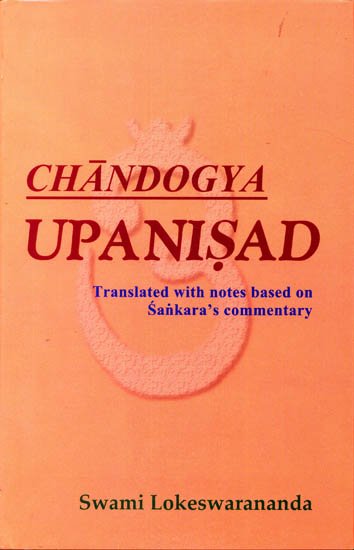Chandogya Upanishad (english Translation)
by Swami Lokeswarananda | 165,421 words | ISBN-10: 8185843910 | ISBN-13: 9788185843919
This is the English translation of the Chandogya-upanishad, including a commentary based on Swami Lokeswarananda’s weekly discourses; incorporating extracts from Shankara’s bhasya. The Chandogya Upanishad is a major Hindu philosophical text incorporated in the Sama Veda, and dealing with meditation and Brahman. This edition includes the Sanskrit t...
Verse 3.18.1
मनो ब्रह्मेत्युपासीतेत्यध्यात्ममथाधिदैवतमाकाशो ब्रह्मेत्युभयमादिष्टं भवत्यध्यात्मं चाधिदैवतं च ॥ ३.१८.१ ॥
mano brahmetyupāsītetyadhyātmamathādhidaivatamākāśo brahmetyubhayamādiṣṭaṃ bhavatyadhyātmaṃ cādhidaivataṃ ca || 3.18.1 ||
1. The mind is Brahman—this worship is called adhyātma. Next is that called adhidaivata: Space is Brahman. [That is, meditate on space as Brahman.] These two ways of meditation are advised: adhyātma and adhidaivata.
Word-for-word explanation:
Manaḥ brahma iti upāsīta, meditate on the mind as Brahman; iti adhyātmam, this is so far as the body and mind is concerned; atha adhidaivatam, next is [the meditation] on the elements and the worlds; ākāśaḥ brahma iti, space is Brahman; ubhayam ādiṣṭam bhavati, two ways [of meditation] are advised; adhyātmam ca adhidaivatam ca, adhyātma and adhidaivata.
Commentary:
Brahman is extremely subtle. Similarly, the mind is also subtle. And it is in the mind that Brahman can be realized. This is why it is comparatively easy to think that the mind is Brahman.
In the same way, ākāśa (space) is also close to Brahman. Like Brahman, it is vast, invisible, all-pervasive, and without any attributes whatsoever. It is therefore appropriate to meditate on ākāśa as Brahman.
